#villefranche sur saône
Explore tagged Tumblr posts
Text

Décor urbain.
#photographie urbaine#urban photography#couleurs urbaines#urban colors#décor urbain#urban decor#abstraction#figuration#mur#wall#minimalisme#minimalism#rue de thizy#69400#villefranche sur saône#rhône#auvergne rhône alpes#france#photographers on tumblr#poltredlyon#osezlesgaleries#lyonurb#brumpicts#frédéric brumby
173 notes
·
View notes
Text

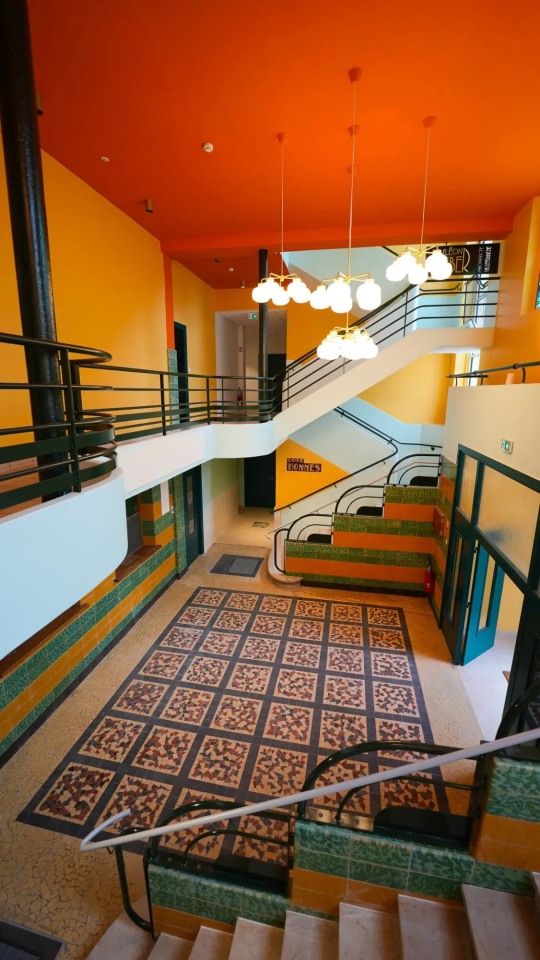


La Halle Bointon à Villefranche-sur-Saône, France, ex piscine conçue en 1935 par l’architecte suisse Léon Weber (1892-1972), transformée en 1985 en établissement sportif. Crédit photo Le Patriote Beaujolais - source Cristina Ardelean.
21 notes
·
View notes
Text
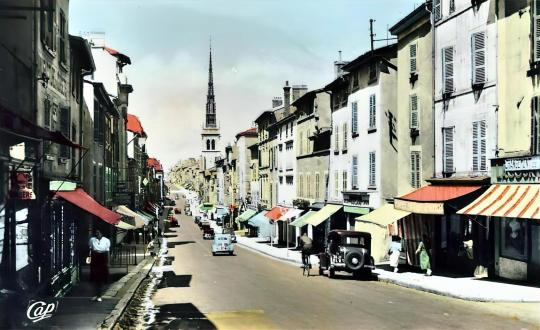
Rue Nationale, Villefranche-sur-Saône, Rhône.
13 notes
·
View notes
Text

CHINA. Beijing. Taxi Driver. (1985) by Raymond Depardon
5 notes
·
View notes
Text

Railway station of Villefranche-sur-Saône, Beaujolais region of France
French vintage postcard
#briefkaart#photography#vintage#sane#tarjeta#postkaart#french#postal#villefranche-sur-saône#photo#beaujolais#postcard#historic#station#railway#carte postale#region#ephemera#sepia#france#ansichtskarte#postkarte#villefranche
1 note
·
View note
Text

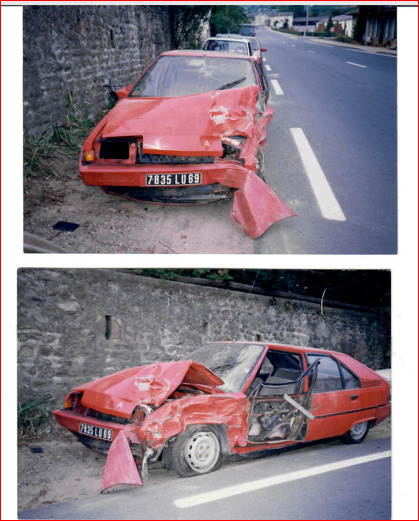

#RECHERCHE#MR ARN.LES#SETE-#CHATEAURENARD#OU AILLEURS#DOIT REGLER SA DETTE TRES URGENT!#REPARER SA DETTE CITROËN BX 14 RE ROUGE#PRIS LA VOITURE ACCIDENT ROULAIT A 130 KM/H CASSER#POTEAU PTT QUINCIE/BEAUJOLAIS 21/09/88#JT14/09/89 VILLEFRANCHE/SAÔNE#BESOIN DE MON ARGENT#EN URGENCE NDEXATION ANNUELLE#AINSI SOIT-IL#16 À qui vais-je comparer cette génération ? Elle ressemble à des gamins assis sur les places#qui en interpellent d’autres en disant :
0 notes
Text
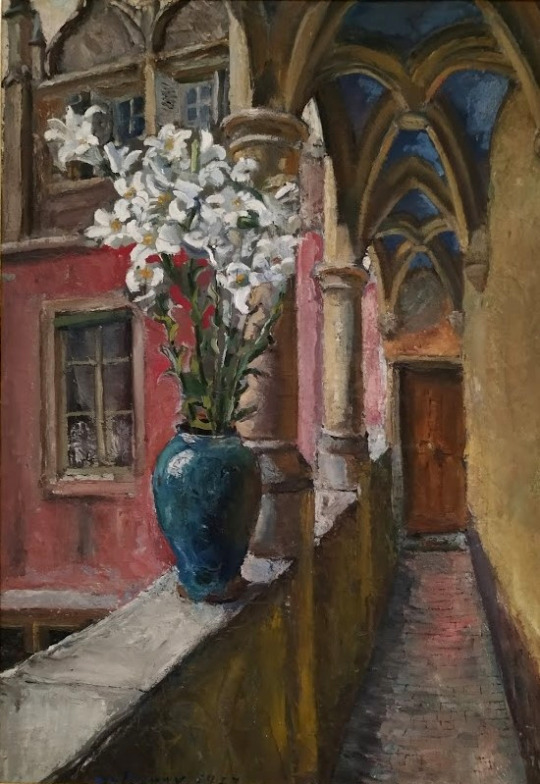
Georges Dufrenoy (1870 - 1943)
"Villefranche-sur-Saône, la loggia aux lys"
Huile sur carton - 91 x 61 cm 1927
Collection Musée Paul-Dini de Villefranche-sur-Saône
Exposition : 1930 : Exposition internationale des beaux-arts à Venise 1948 : Rétrospective Georges Dufrenoy, Musée Galliéra 1962 : Galerie Katia Granoff 1983 : Musée des beaux-arts de Lyon
#dufrenoy#postimpressionism#art#artist#georgesdufrenoy#artoftheday#artistepeintre#artwork#painting#oilpainting#villefranchesursaone#villefranche#art moderne#modernart#fine art#art history#artists on tumblr#artiste peintre#peintre#peinture#peinturealhuile#oil painting#paint#painter#naturemorte#still life#stilllife#flowers#fleurs#lys
74 notes
·
View notes
Text

Jassans-Riottier,agglomération de Villefranche-sur-Saône, résidence les Marronniers.
#jassans riottier#villefranche sur saone#lyonnais#architecture#retro géographie#urbanisme#trente glorieuses#banlieue
28 notes
·
View notes
Text
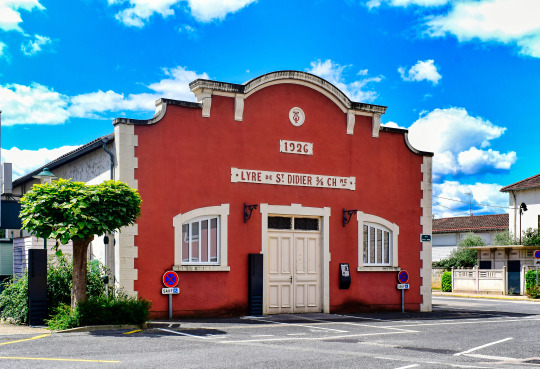
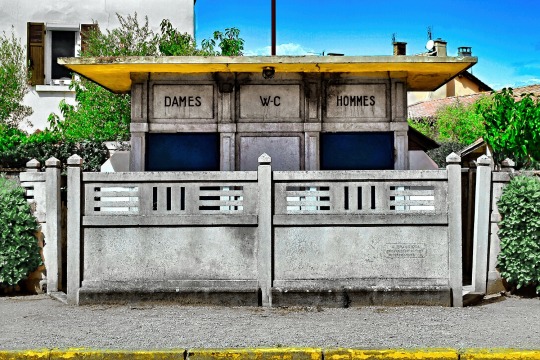
Salle de la Lyre et ses toilettes publiques d'un autre temps (réalisées en moulage ciment par J. Francioli à Villefranche-sur-Saône). La salle fut construite en 1926 par la société de musique La Lyre (fondée en 1904 par Jacques Meunier). Ce fut un chantier laborieux où chaque musicien vint travailler bénévolement. Elle fut inaugurée le 15 mai 1927 et servit durant de nombreuses années de salle de cinéma et de spectacles avant d'être aménagée par la mairie, dont elle devient propriété communale en 1968.
#SalleDeMusique#LaLyre#1926#AncienCinema#ToilettesPubliques#MoulageCiment#JFrancioli#SaintDidierSurChalaronne#Ain
23 notes
·
View notes
Text

Happy Saturday, Clue Crew! I want to talk about the art displayed, next to Nancy Drew’s bed (as seen in Alibi in Ashes). I’ve already discussed (in a previous post) how Alphonse Mucha is featured, quite prominently, in several of the ND games. At a glance, one might think the three, framed posters, on the yellow wall, are his work. However, they were done by a contemporary of Mucha, named Paul Berthon. Like Mucha, Berthon worked in the Art Nouveau style, which is why it is easy confuse their pieces!
Paul Berthon…was a French artist who produced primarily posters and lithographs… Berthon studied as a painter in Villefranche-sur-Saône before moving to Paris… His study of the decorative arts influenced his print making, influencing the strong lines and natural details that guided his art. The vast majority of Berthon's lithographed posters did not include advertisements and were meant to stand on their own.

The piece on the far left, of Nancy’s wall, is a print named The Salon de Cent (Salon of the One Hundred). If you are unfamiliar what “the Salon” is, in reference to art history, it was:
…the official art exhibition of the French Academy of Fine Arts (Academie des Beaux-Arts) in Paris. First held in 1667, its name stems from its location at the Salon Carre in the Louvre. For almost 150 years…the Salon was the most prestigious annual or biannual art event in the world.
The aforementioned print, was advertising Salon des Cent, which was a commercial art exhibition in Paris, based at 31 Rue Bonaparte.
The Salon sold color posters, prints and reproductions of artwork to the general public at reasonable prices. The Salon held exhibitions until 1900. Many of the posters advertising Salon des Cent exhibitions have themselves become collectors’ items.
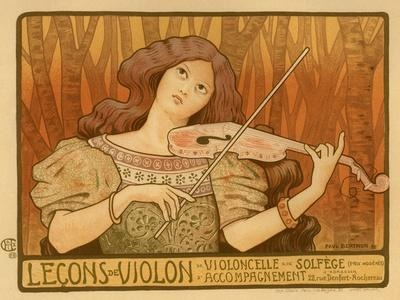
The middle poster of Nancy’s Art Nouveau collection, is another advertisement, for violin lessons (Leçons de Violin).
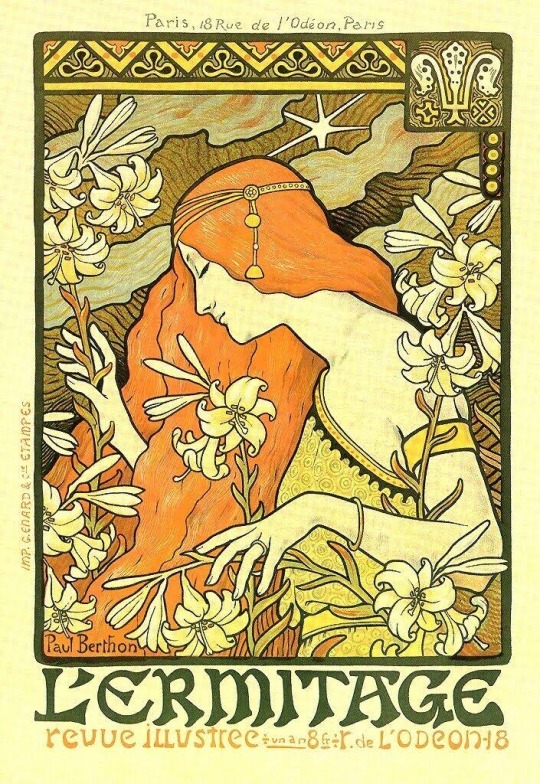
The last poster of the trio is L’Ermitage.
L’Ermitage was a monthly, literary review that was published in Paris, France between 1890 and 1907.
The publication came under new management in 1896 during which time the literary review was reorganized. Subjects included in the magazine expanded beyond poetry and plays to also include that of the visual arts. With the expansion of subjects, the editors decided to commission Art Nouveau illustrations to grace the covers…
Art Nouveau reflects the ideals and desires of Paris at the end of the nineteenth century, which include happiness and indulgence in life and beauty without all the turmoil and problems of the newly industrialized world. In this piece, Berthon uses a woman with long, flowing hair and flowers as a symbol of beauty and purity. The print consists of just four colors in addition to the black ink.
L’Ermitage was included in the Les Maitre de L’Affiches series, or Masters of the Poster. This series was originally offered as a subscription for collectors, in which a different poster was mailed out monthly and which could be bound together at the end of the year. L’Ermitage was mailed out in 1900 as plate 227 of the series. These posters were greatly appealing due to their smaller, more manageable size, and the high quality of printing materials. The original larger posters usually had to be rolled up to store and were printed with a lesser quality ink.
A lithograph copy of L’Ermitage is currently on display at the Los Angeles County Museum of Art in Los Angeles, California, the United States.
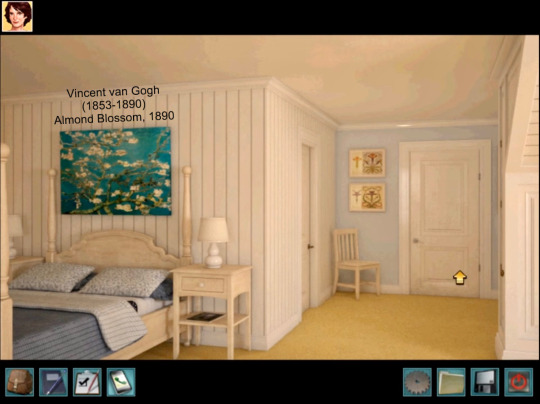
That does it, for the posters, on the yellow wall! But you’ll notice a canvas, prettily centered over Nancy’s bed. This is the very recognizable Almond Blossom, by the one and only, Vincent van Gogh.
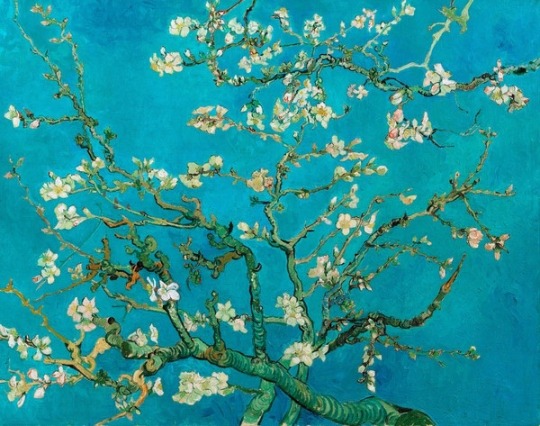
You’ll see that the piece, in ASH, is a mirrored image, of van Gogh’s original. I can only assume this was done for copyright purposes, but that’s just conjecture.
Vincent loved nature. Blossoming trees, like in the painting Almond Blossom, were one of his favourite subjects to paint. He painted a number of variations on the theme: ranging from a small flowering sprig in a glass to lavishly blossoming trees.
Almond trees flower early in spring. The tree therefore marks the arrival of spring and the start of new life. And that was very appropriate in this case, as Vincent didn’t paint this work for just any old reason…
The painting was a gift for Vincent’s newborn nephew. The boy was born on 31 January 1890, and Theo and his wife Jo named him Vincent, after his uncle. Van Gogh was delighted to hear the news: ‘It does me, too, more good and gives me more pleasure than I could express in words’.
The painting became a treasured possession as soon as Vincent presented it to Theo and Jo as a gift. At first, it hung prominently above the piano in Theo and Jo’s living room. Later, once Jo had moved to Bussum following Theo’s death, the work hung in her and her son Vincent’s bedroom.
Following the death of Vincent and Theo, all of Vincent’s paintings passed into Jo’s hands. She sold a number of works during her lifetime, but Almond Blossom was so precious to Jo and her son that it was never to be sold. And that’s why to this very day, it is on display at the Van Gogh Museum.
For Van Gogh, painting Almond Blossom signified a new start. At the time, he had already been at an asylum in Saint-Rémy for almost ten months. Due to an attack of his illness, Vincent had not worked for weeks. He was now allowed back outside to paint, surrounded by nature.
Vincent worked hard, but that cost him dearly. Once he had completed the painting at the end of February, he had an attack that lasted for two months; his longest ever crisis. Once he had recovered, a new disappointment awaited: Vincent had missed his beloved flowering season.
‘If I’d been able to continue working, […] I would have done others of the trees in blossom. Now the trees in blossom are almost finished, […] I have no luck’.
Vincent chose an unusual perspective for Almond Blossom. He painted the branches from below and very close up. It is as if you are lying on your back on the grass, looking up at the branches above you, so that you can no longer see the entire tree. Vincent had seen this approach in Japanese printmaking and was inspired by it. These prints often zoom in on details from nature, and the image was sometimes cropped.
The subject itself also feels very Japanese, as blossom played a significant role in Japanese printmaking.
There you have it! I hope this information helps you appreciate ASH and Nancy’s room, a little more. I know I really appreciate the art, featured in the Nancy Drew games. I think it’s part of why I went into art history, to begin with! I owe a lot, to these games.
That is all. Happy scrolling.
#nancy drew#her interactive#clue crew#alibi in ashes#ash#vincent van gogh#paul berthon#nancy drew pc games#art nouveau
57 notes
·
View notes
Text
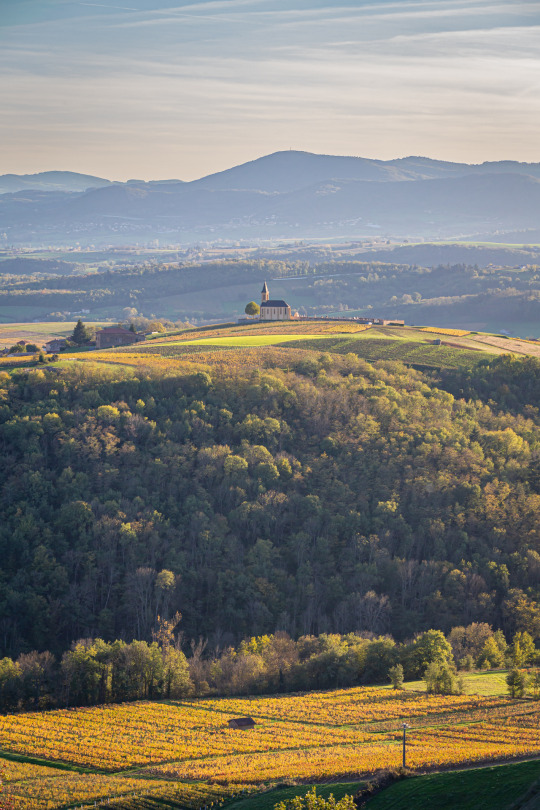

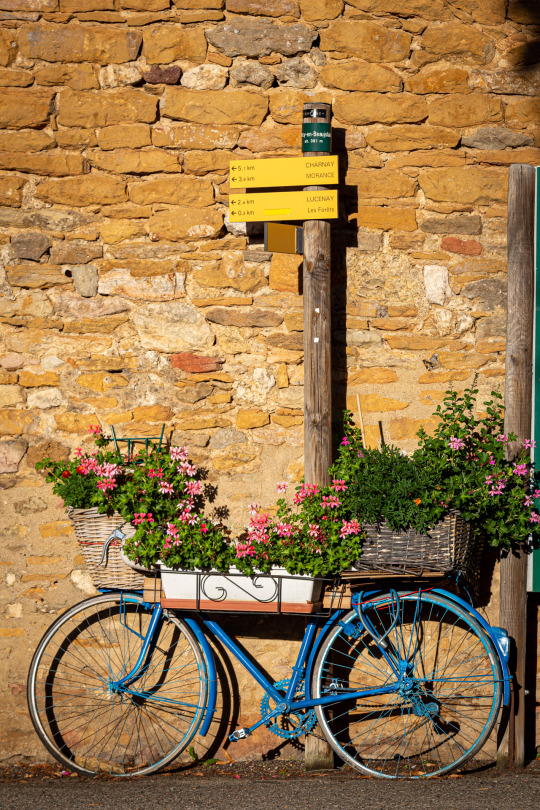

Arrondissement de Villefranche-sur-Saône (2) (3) (4) by Denis Gounelle
Via Flickr:
(1) Fin de journée sur la chapelle de Saint-Laurent d'Oingt. End of the day on the chapel of Saint-Laurent d'Oingt. (2) Vue depuis Belmont d'Azergues. View from Belmont d'Azergues. (3) Promenade en Beaujolais. Walk in Beaujolais. (4) Lever de lune sur le cimetière. Moonrise over the cemetery.
#landscape#agricultural landscape#countryside#golden light#towers#bicycles#flowers#graceyard#moon#evening sky#france#auvergne rhône alpes
7 notes
·
View notes
Text

Décor urbain.
#photographie urbaine#urban photography#couleurs urbaines#urban colors#décor urbain#urban decor#abstraction#figuration#mur#wall#minimalisme#minimalism#rue de la paix#69400#villefranche sur saône#rhône#auvergne rhône alpes#france#photographers on tumblr#poltredlyon#osezlesgaleries#lyonurb#brumpicts#frédéric brumby
116 notes
·
View notes
Text
Il avait 34 ans. J'en ai 29.
Pendant une dizaine d'années, tous les soirs, je retrouvais le personnage qu'il jouait : Abdel Fedala, fils d'un (plus ou moins ex) caïd de Marseille. Quand son père part en taule, il le confie à un flic raciste, et ils font un sacré bout de chemin ensemble.
Abdel, je l'ai vu passer son bac juste avant moi, aller à la fac juste avant moi. Je l'ai vu tomber amoureux, avoir le cœur brisé, tremper dans des petites magouilles, puis des grandes, devenir avocat, puis avocat véreux, puis tenter de reprendre le droit chemin. Je l'ai vu en deuil, en colère, joyeux, vengeur, romantique. Je l'ai vu être témoin de mariage, se marier avec son premier amour, être heureux dans le tout dernier épisode diffusé sur France 3, à l'idée de devenir père.
Quand il a été confirmé que TF1 reprenait "Plus belle la vie", j'étais aux anges, et j'avais hâte de revoir Abdel et sa chérie Barbara (jouée par Léa François). Ils faisaient partie de ma génération d'ados de PBLV. Marwan Berreni aurait dû reprendre le tournage de la série ce lundi 23 octobre.
Je ne savais rien de lui. Je trouvais ça ironique que ce soit lui qui soit impliqué dans une affaire impliquant un délit de fuite, vu qu'il jouait le rôle d'un avocat. J'ai passé l'été à me demander où il était et s'il était vivant.
C'est le deuxième suicide d'un acteur de cette série en quelques mois. Je ne suis pas encore totalement convaincue que c'est ce qui s'est vraiment passé. L'enquête est encore en cours. J'espère que toute la lumière sera faite sur cette affaire.
Je sais très bien que c'est à la mode de cracher sur "Plus belle la vie". Que comme c'est un genre de soap, c'est une série critiquée. Moi ce que je sais, c'est que cette série m'a accompagnée (ainsi que ma famille) depuis mes 11 ans, tous les soirs, du lundi au vendredi, et que certains de ces personnages sont comme mes voisins ou des anciens camarades de classe. C'est une série qui, entre deux enquêtes, parlait de plein de sujets de société, comme l'homosexualité, l'homophobie, l'avortement, le chômage, l'adolescence, les violences conjugales, la famille, le divorce, l'adoption, la GPA, les grands escrocs et les travailleurs qui se démènent avec un SMIC pour nourrir leur famille.
Dire que tout cela ne m'affecte pas serait mentir.
Je pense à ses parents, qui avaient déjà perdu un fils il y a dix ans, tué aux USA par des voleurs.
Et je suis très émue par l'hommage de Léa François.
Abdel me manquera.
youtube
#plus belle la vie#tw : mort#death#suicide#acteur#cinéma français#si vous voulez l'ouvrir pour critiquer alors c'est pas la peine#Youtube
5 notes
·
View notes
Text
La musique traditionnelle kurde au service du tragique dans "Nos âmes se reconnaîtront-elles ?" | France Musique
La musique traditionnelle kurde au service du tragique dans "Nos âmes se reconnaîtront-elles ?"
Publié le samedi 25 janvier 2025
et Ménélas qui se retrouvent juste après la destruction de la ville par les Grecs. Le récit est accompagné par deux musiciens kurdes, Eylül Nazlier et Ruşan Filiztek :
« J'ai choisi surtout des morceaux des chants de troubadour, raconte le chanteur et instrumentiste Ruşan Filiztek. On les appelle Dengbêj en turc, et ici on chante surtout en langue kurde. La situation en Moyen-Orient - et ailleurs - pour les Kurdes, les Arabes et les Ukrainiens est difficile : tous ces peuples souffrent. Et c'est avec toutes ces souffrances que j'ai choisi le répertoire pour la pièce. On était libre sur la scène mais je ne peux pas chanter leur langue. Simon [Abkarian] m'a dit : chante ce que tu peux chanter. J'aurais aimé chanter en ukrainien, en russe, en arabe, en hébreu, en turc... En tout cas, on a chanté pour tous les peuples qui souffrent. »
niveau vibratoire de ce qu'elle provoque. »
"Je n’ai pas envie de voir ce dialecte disparaître"
Les musiques et chants interprétés par Ruşan Filiztek et Eylül Nazlier viennent toutes du répertoire kurde. Les deux artistes chantent en kurmandji, langue traditionnelle kurde mais aussi en zazaki, dialecte auquel Eylül est très attachée :
« C’est un dialecte kurde, très ancien, c’est même le premier dialecte. Aujourd’hui c’est une langue protégée par l’Unesco car elle est parlée par une minorité de personnes… C’est ma langue maternelle et dans la nouvelle génération que je représente - on a le même âge - personne ne sait parler ce dialecte. Quand j’ai réalisé ça, je me suis dit qu’il fallait faire quelque chose. C’est ma culture et c’est trop difficile de constater cette disparition de la langue donc j’ai pensé à la musique et je me suis dit que j’allais chanter en zazaki. Dans les villages il y a encore beaucoup de chants interprétés en zazaki. Ce sont surtout les plus âgés qui connaissent cette langue et qui la chantent, mais ce sont des musiques que l’on ne retrouve pas sur Youtube ou Spotify… Donc je suis allée de village en village enregistrer ces chants auprès des anciens et anciennes, j’ai fait mes recherches et depuis, sur scène, jusqu’à maintenant, je ne chante qu’en zazaki, à l’exception de ce soir où on chante les deux langues : le kurmandji et le zazaki. Mais pour moi ce sont un peu les mêmes : des langues kurdes, nos langues. J’ai quand même une petite préférence pour la langue zazaki, j’aimerais la faire connaître toujours plus et surtout : je n’ai pas envie de la voir disparaître. »
Nos âmes se reconnaîtront-elles est jouée au théâtre des Amandiers à Nanterre jusqu’au 2 février. Puis en avril à Villefranche-sur-Saône et en mai à Amiens et à Agen.
0 notes
Text
Villefranche-sur-Saône (69) : un SDF poignardé plusieurs fois dans le ventre. L’agresseur est un migrant guinéen multi-condamné, récidiviste et toujours en France malgré l’OQTF… 3 ans de prison dont une partie en sursis
Mardi, l’individu âgé de 24 ans avait planté à plusieurs reprises son couteau de cuisine dans l’abdomen de son adversaire devant la gare de Villefranche-sur-Saône. Une rixe entre SDF qui avait dégénéré, laissant la victime âgée de 46 ans dans un état inquiétant. Les jours de cette dernière ne sont finalement pas en danger. Continue reading Villefranche-sur-Saône (69) : un SDF poignardé plusieurs…

View On WordPress
1 note
·
View note
Text

Journe factory in Villefranche-sur-Saône, Beaujolais region of France
French vintage postcard
#beaujolais#journe#historic#region#photography#postal#ansichtskarte#sane#photo#sepia#vintage#postcard#france#briefkaart#factory#postkarte#tarjeta#carte postale#ephemera#villefranche#postkaart#french
7 notes
·
View notes